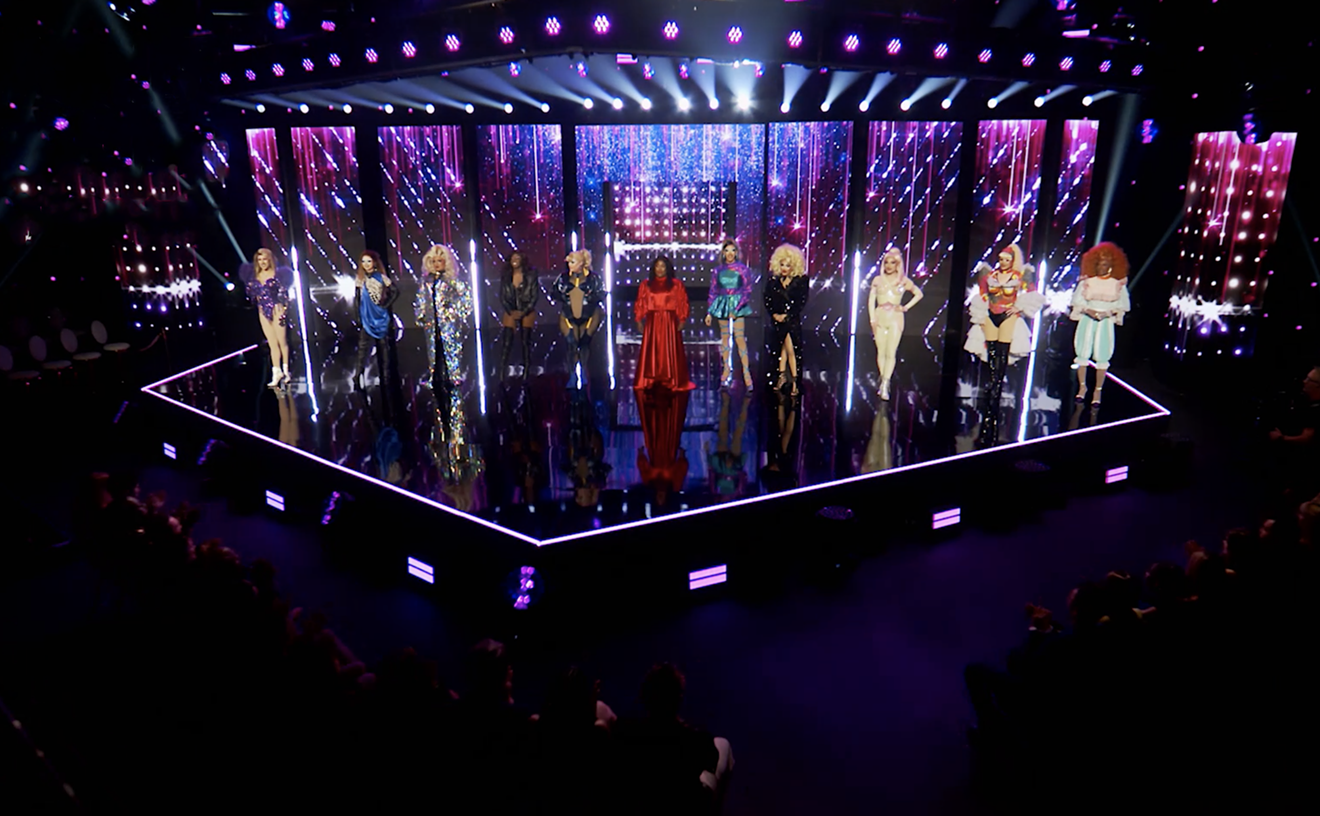And so it was at the Edge Zones opening Saturday evening, April 17. A new creative powerhouse of an arts organization headed by the affable and polished Charo Oquet and David Vardi, Edge Zones operates out of the World Arts Building in Wynwood. At the opening, the place was humming with visitors of all ages, basking in the abundant hospitality.
For this occasion, Edge Zones sponsored a trio of shows, each with its own curator, each in a different gallery space within the World Arts Building. Artist Carlos de Villasante was one of the curators, and his exhibition in the simply named Large Gallery, "Assembly Required," reminds us that yes, assembly is always required. By taking the pulse of a group of artist colleagues, de Villasante unleashes rather than curates a diverse survey of developments among Miami's visual artists. To be sure, there are some drab moments and some donning of authoritative styles derived from art pioneered elsewhere. It's not so easy to uncover an authentic Miami aesthetic. But uneven is not uninteresting, and some contributions are worth noting.
De Villasante's own work depicts himself as the eternal sprite, this time in enamel paint and auto decals adorning glossy car hoods. The hoods have been dissected from their chassis and hung just so on the wall, like shards of ancient Greco-Roman pottery with silhouettes disporting themselves.
When an artist curates, he must expand his operative vision beyond his own studio practice to encompass a vision of others' work. Just as chefs usually know where to get a great meal, and doctors know who provides the best treatment, so too artists who act as curators can usually be expected to provide the art spectator with some treasures.
Cesar Trasobares's Gorsky Expedition 1, a delicate skeleton of a flying machine suspended from the ceiling and wrapped in his signature dollar bills, suffered a bit in its hallway location, but its spirit is irrepressible, especially when you read the charming story that inspired its creation. (You'll have to go and see for yourself.)
Frances Trombly's minimalist canvases of hand-woven fabric are taut, elegant, and thought-provoking, while John Bailly's small framed paintings on paper are muscular and ethereal at the same time, upstaging his larger works on canvas.
The second exhibition, "Visual Mnemonics," curated by Charo Oquet in the Center Gallery, ties together the artistic practices of Heather Boaz, Elisabeth Condon, Vanessa Garcia, and Samantha Kruse. The title suggests that the works each provide some visual device to aid memory. Condon's watercolors do act as buttons, tripping the viewer to highway roadsides, where her wiggly tow trucks and earthmovers frolic among haphazard construction detritus. These works are effervescent and innocent as they uncover the transcendent possibilities in the contemporary landscape. Unexpected textures and washes further distinguish her paint-handling from the ordinary.
Garcia's installation, which layers painting on canvas and paper, framed and unframed, wall stickers, and endless draped materials, suffers from visual overload; still it is possible to enjoy moments when edges meet and overlap, and when subtle color relationships are formed.
The third show, "Other Worlds and the Magic Castle," curated by artist David Prusko in the Upstairs Gallery, actually required more assembly than the others. Here the existing architecture of the space itself was integrated more successfully into the artists' installations, the vista of the city entering the array visibly and imaginatively. Cobbling together gestures from Arte Povera, scatter art, and the hip-hop poesy so fashionable today, Tort Prescott, Justin Baker, and Prusko harmonize well.
A makeshift wooden shanty cabana by Prusko, composed of local garbage and covered with verbiage, speaks truths about urban segregation and its accompanying vicious cycle of poverty, fueled by fear of people with darker skin color -- all of which exists just beyond the gallery windows. This work functions coherently as propaganda, and as such it remains blunt, stuck in the real.
Prusko's Dark Star, a Rube Goldbergian still-life vignette, suggests some arcane pseudoscientific operation achieved by levitating a black anti-matter disco ball aloft, its mirrored shards in shambles on the floor, hitched to a phonograph spinning a record, while Seventies and Eighties hits emanate from a nearby late-model sound system. Playful and mysterious, this work piques the imagination and prompts interesting narratives that belie its low-tech simplicity. Baker's folded-paper pieces with faint pencil lines are both parsimonious and lush.
In the building's Mezzanine Gallery, Cecilia Paredes exhibits large-scale photos she has grouped together as "Nature within Nature." On the building's exterior, Rebecca Guarda's Windspinner exploits the existing latticework to kinetic effect -- a grid configuration of pinwheels seems to make the façade flutter.
The Miami Beach Cinematheque recently presented "From Beauties to Beasties: Short Videos by Elizabeth Hall." One of Miami's resident video genius-goddesses, Hall is also an avid curator and presenter of new video works at such Miami venues as the Experimental Show.
Her installation this past October of Jerky Bride at the Art and Culture Center of Hollywood was stunning, a testament to the breadth of her vision. She is painstaking and bold at the same time, pushing the boundaries of the digital-video medium. Hall incorporates glitches into the texture of the moving image in the manner of a weaver who admits irregularities into the warp and weft of a tapestry, embracing these irregularities as divinity.
She moves the academic critique of classic fairy-tale iconography beyond knee-jerk feminism, shading it with vulnerability, humor, and a smoldering eroticism. Keep your eyes peeled for more work from Hall.
The Cinematheque program also included a phenomenal cameo work by Susan Ingraham called Iguana.










